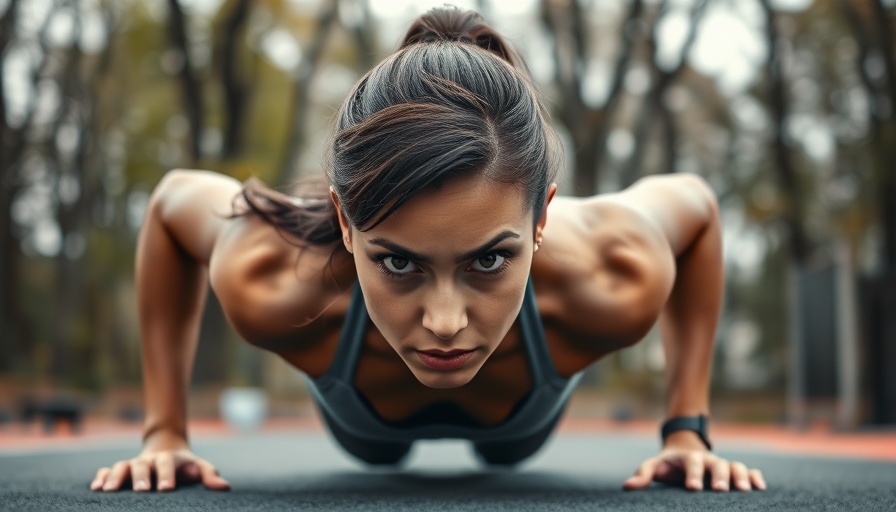
Why Arm Workouts Matter After 40
As women journey into their 40s, the challenges in maintaining muscle tone—particularly in the arms—become more pronounced. With changes in hormone levels, especially a decrease in testosterone, it's easy to let arm workouts slide. However, with the right approach, it's entirely possible to achieve sleek and toned arms. Effective arm workouts focus primarily on three major muscle groups: the biceps, triceps, and shoulders. This focused routine only takes about 20 minutes to complete, making it accessible for even the busiest schedules.
The Best Arm Exercises for Women Over 40
Trainer Rachel Weber has developed a simple yet effective set of exercises that can transform your arms. The process is not just about lifting weights but establishing a consistent routine. Here’s how each exercise helps:
Bicep Curls
How to Do It: Stand tall with feet shoulder-width apart, holding a dumbbell in each hand. With a supinated grip, curl the weights up towards your shoulders and squeeze your biceps at the top. Lower the weights with control. Aim for 3 sets of 10 reps.
Why It Works: Bicep curls directly target the bicep muscles, improving tone and strength, vital for functional upper body mobility.
Overhead Triceps Extensions
How to Do It: Start standing with both hands gripping a dumbbell overhead, arms fully extended. Bend your elbows to lower the weight behind your head, ensuring your elbows stay close to your ears. Press back up to the starting position for 3 sets of 10 reps.
Why It Works: This move focuses on the triceps, an often-neglected area that can contribute significantly to the appearance of the arms.
Lateral Raises
How to Do It: With a dumbbell in each hand at your sides, raise both arms out to the sides until they’re shoulder level and then lower with control, completing 3 sets of 12 reps.
Why It Works: Lateral raises help to build shoulder strength and definition, adding to the sleekness of toned arms.
Front Raises
How to Do It: Hold a dumbbell in each hand in front of your thighs, lift both arms forward to shoulder height, pause, and lower with control for 2 sets of 10 reps.
Why It Works: Front raises engage the front deltoids, promoting overall upper body strength.
Tricep Kickbacks
How to Do It: Bend slightly at the waist and hold a dumbbell in each hand. Extend your elbows back, squeezing your triceps, then return to the start for 3 sets of 10 reps.
Why It Works: This exercise is fantastic for isolating and tightening the triceps, crucial for sleeker arms.
Creating a Consistent Routine
Whether you're short on time or trying to avoid overwhelming workouts, consistency holds the key to seeing results. Set a schedule to completely integrate these exercises a few times a week into your regimen. This commitment, no matter how small, can lead to significant improvements over time. Remember, it's not just about going hard; it's about regularly showing up for your workouts.
Embracing a Well-Rounded Fitness Approach
While these targeted workouts are essential, combining them with a balanced diet rich in nutrients will amplify results. Foods high in protein will support muscle recovery and growth, while staying hydrated aids in performance. Smoothies made with nutrient-dense ingredients can be a delicious and effective way to integrate healthy eating with your fitness goals.
Incorporating fitness into daily life enhances not only physical appearance but overall well-being. The sense of empowerment that comes from taking steps to care for your body can positively influence other areas of your life.
Are you ready to take control of your fitness journey? Share your experience with us and let us know how these exercises have made a difference in your routine. Start building a positive community around your healthy lifestyle today!
 Add Row
Add Row  Add
Add 







Write A Comment